Table of Contents
Travel to Micronesia: The Region At-A-Glance
Many travelers may be familiar with the tropical paradise of Polynesia, but far fewer are familiar with Micronesia, one of Polynesia’s counterparts in Oceania lying mostly north of the equator. The region is home to thousands of tiny islands and islets stretching across thousands of miles, from Kiribati in the southeast to the Commonwealth of the Northern Islands in the northwest. The remoteness of these islands have led to the development of diverse cultures within the region, and the islands differ geographically, too. Some are mountainous, covered in dense rainforests; others are coral atolls peaking just a few feet above sea level. For these reasons, a traveler exploring this region is offered a bounty of things to do, see, and experience. Here is an introduction to a few of the island nation who call Micronesia home.
Republic of the Marshall Islands
The Republic of the Marshall Islands are a chain of coral atolls lying approximately 2,400 miles to the southwest of Hawaii. These islands average just a few feet above sea level, and are typically no more than a few hundred feet wide, so land-based activities are few and far between. However, the intrepid explorer can venture out of the main island, Majuro, to some of the far-reaching outer island atolls for spectacular diving and surfing. A handful of divers each year are lucky enough to dive on one of the most unique and restricted sites in the world, Bikini Atoll. History buffs will recall this was the site of U.S. nuclear testing; the island is still restricted for habitation and fish from the lagoon are unsafe to eat, but the reduced pressure from fishing has sparked a massive boom in marine life on the reefs and shipwrecks here. It is arguably one of the best dive sites in the Marshall Islands.
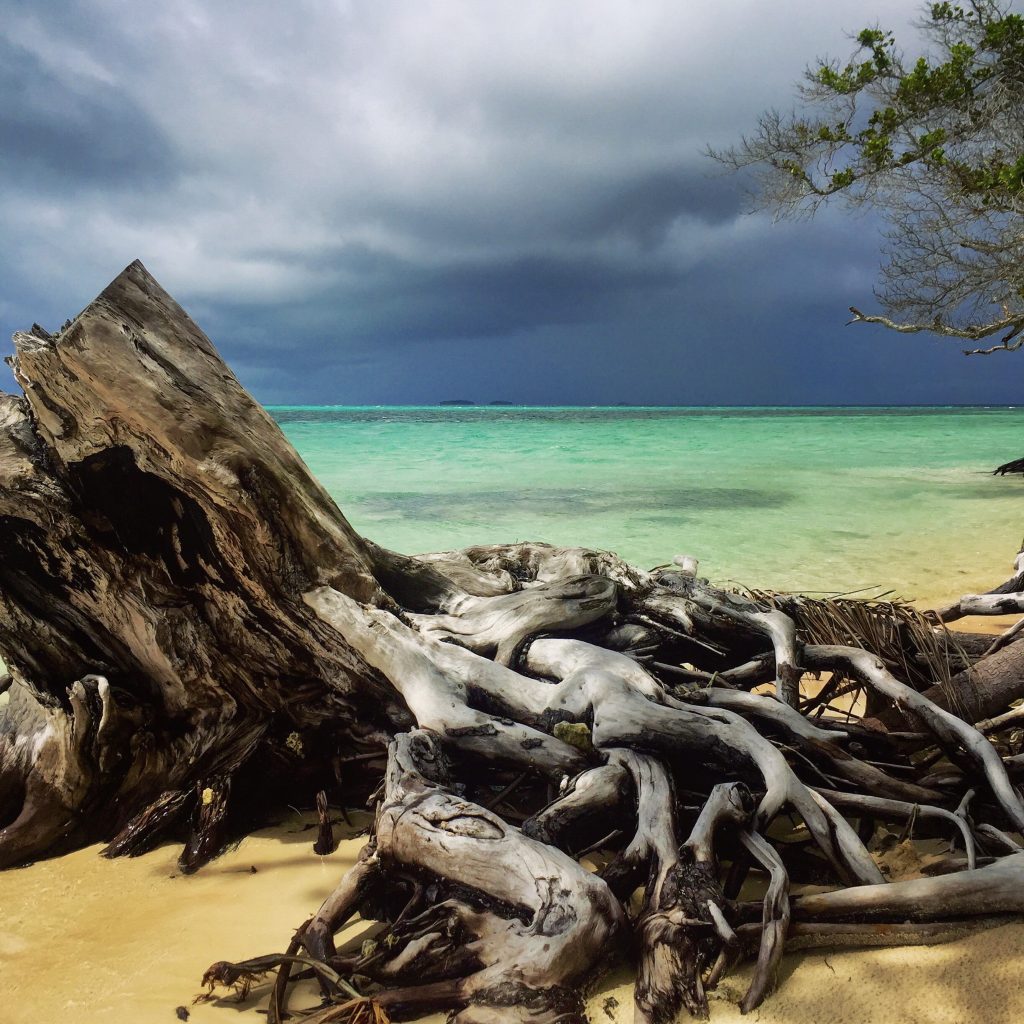
Federated States of Micronesia
The Federated States of Micronesia (FSM) are made up of four main islands (Kosrae, Pohnpei, Chuuk, and Yap), surrounded by over 600 smaller outer-lying islands, spanning nearly 1,700 miles of ocean. This geographic remoteness has led to wide cultural diversity across the nation.
Each of the main islands is appealing in different ways. Kosrae’s moniker as the “Land of the Sleeping Lady”, a reference to how the mountain peaks resemble a reclining woman, is truly fitting. Kosrae is a small, quiet, sleepy island. It’s lush mountain terrain and beautiful coral reefs make it the perfect spot for a traveler who is looking to unwind and reconnect with nature. Kosrae offers a number of jungle hikes, waterfalls, preserved ruins of the earliest inhabitants, World War II (WWII) sites, and dozens of pristine reefs, shipwrecks, surfing, as well as its own Blue Hole to explore.
Pohnpei is livelier than Kosrae, with a number of bars, restaurants, and even a two auditorium movie theater. Pohnpei is the island to visit for the best hiking, surfing, and fishing in FSM. The diving in Pohnpei is also excellent; manta dives are the main attraction here, and the lucky diver might even spot a few orcas. A true wonder of the ancient world can be found on Pohnpei. Nan Madol, a city of megalithic structures constructed on a series of man-made islets, lies nearly hidden just off the coast in the Madolenihmw.

However, for the serious diver, Chuuk is the island that cannot be missed. Chuuk lagoon boasts the largest concentration of wreck dives in the world. In 1944, the U.S. launched Operation Hailstone, sinking 50 ships and 265 aircraft. Many of the wrecks lie in 100-120’ of water, making them easily accessible to an advanced certified diver.
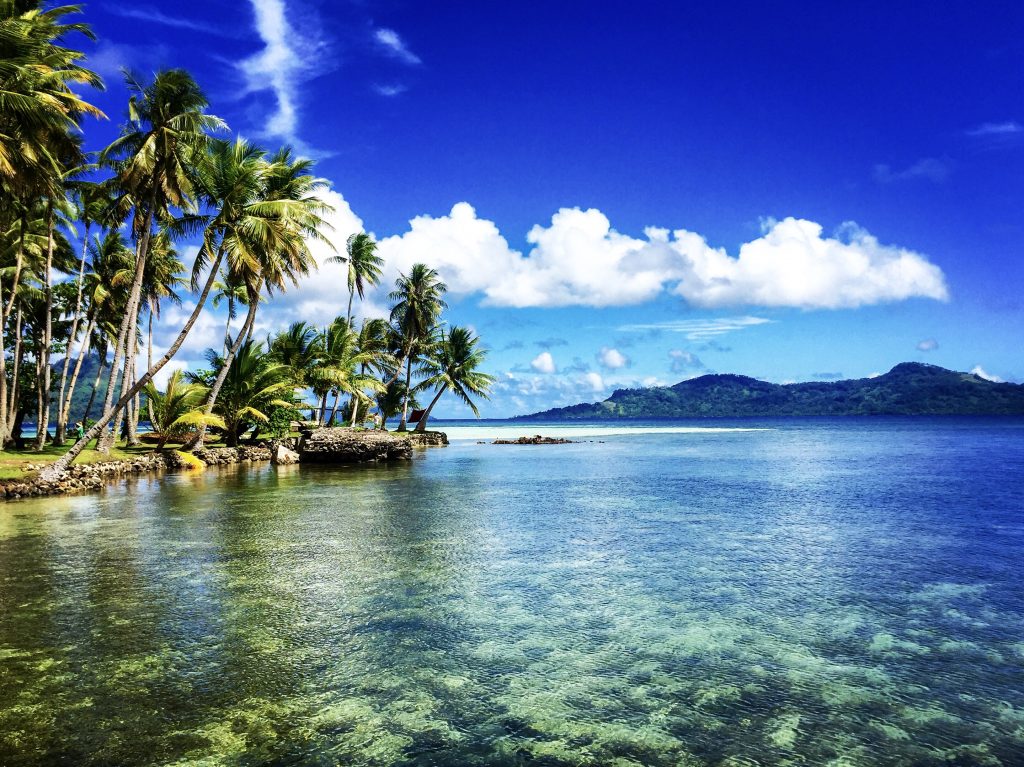
For a traveler looking for an unforgettable cultural experience, Yap is one of the most fascinating islands in the entire region. Try to time your visit around March 1, to experience Yap Day – a colorful celebration of Yapese heritage. Work with local guides to arrange a visit to one of Yap’s many outer islands, to have an immersive experience in the local culture. If you can’t make it to the outer islands, don’t worry. A guided tour of the villages on Yap can be arranged, where you’ll learn about the history and value of Yap’s stone money, walk along centuries-old stone paths leading to thatched roof faluw (men’s house) or p’ebay (community house), important traditional meeting houses.

Travel Tips: If you do visit on Yap Day, note that in certain areas of the festival, traditional garb is required from participants and spectators. That means women will be topless, donning only their vibrant green, red, and yellow grass skirts.
Kosrae takes the Sabbath very seriously. Visitors to the island are encouraged to spend this day relaxing, rather than diving. Sometimes hikes are arranged for visitors and ex-pats on Sunday, so work with your hotel and local guides to determine an acceptable activity, or simply spend the day relaxing and enjoying the idyllic scenery of the island.
Chuuk does have a reputation in the region for being the most unruly. Visitors should play it safe by retiring to their hotels after sundown. The two main dive operation, Truk Stop and Blue Lagoon, both offer scenic patios where divers can spend the evening hours enjoying dinner and drinks.
Palau
Palau’s population is small, and the main island is rather sleepy, save for the disco on Friday nights at Taj, the best Indian restaurant in the Pacific (you heard it here first). If you do have a day to spend on the main island, take an easy hike to the Ngardmau waterfall or the Ngardok Nature Reserve, visit the enchanting Badrulchau stone monoliths, and buy a day pass to relax at the M&A Beach Bungalows, offering one of the only swaths of natural beach on the island.
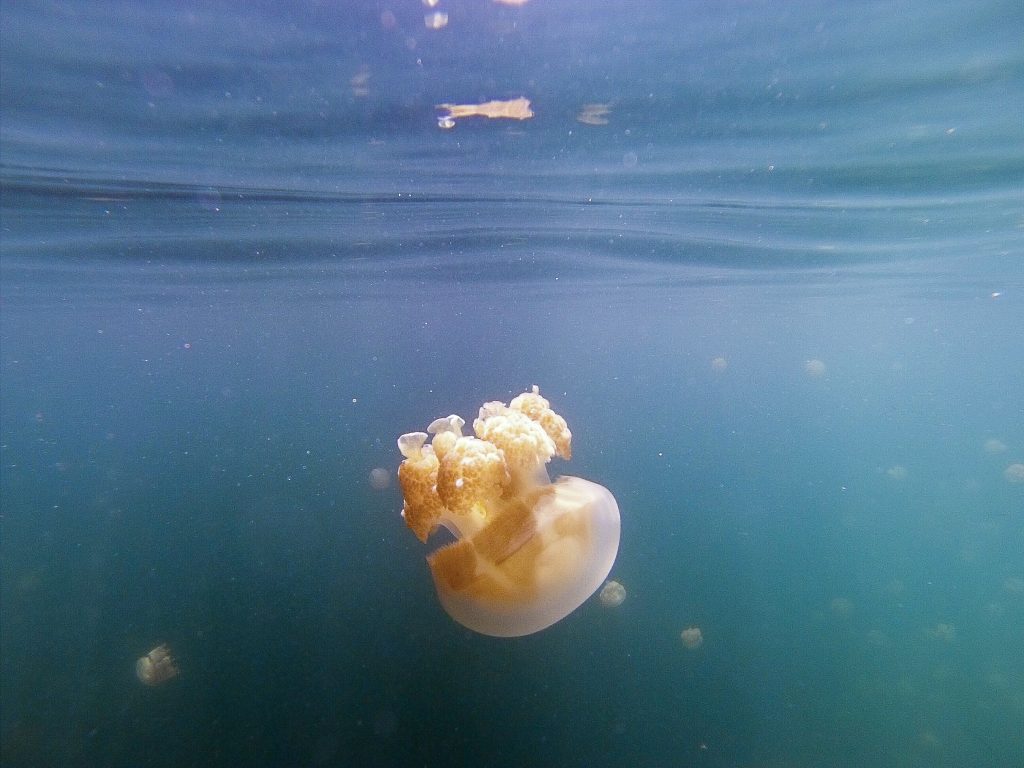
However, Palau’s crown jewel, the Rock Islands, make this island a must-do for anyone traveling in the region. The Rock Islands Southern Lagoon is a UNESCO World Heritage site, boasting 445 mushroom-shaped limestone islands surrounded by the most brilliant shade of turquoise lagoons. The islands are surrounded by coral reefs, and swarming with marine life. Palau established the first shark sanctuary in the world, and now their populations of 13 shark species are thriving, providing divers amazing viewing opportunities. For those not dive certified, a variety of tours are offered to allow visitors to kayak, snorkel, or simply view from the boat the majesty that is the Rock Islands. Jellyfish Lake, a protected marine lake, is a major draw to the Rock Islands, but there are dozens of other fascinating lagoons where snorkelers can spot colorful mandarin fish, juvenile black tip reef sharks, cuttlefish, moon jellyfish (different than the Golden jellyfish of Jellyfish Lake), and hundreds of other marine species.
Guam
Guam is the most developed island in the region, complete with luxury shopping, resorts, white sand beaches, and chain restaurants. Don’t let that dismay you though, Guam is a beautiful island that offers plenty of activities for adventure travelers. In addition to diving, fishing, and kayaking, Guam’s topography begs to be explored on foot. Locals take part in weekly “boonie stomps”, or treks through thick jungle usually ending at a waterfall or deep underground caves. Visitors to the island can join the non-profit Guam Boonie Stompers on Saturdays for $2.00 guided hikes.

Even though Guam is the most populated island in Micronesia, the southern end of the island is mostly uninhabited. Rent a car and drive toward Inajaran for even more gorgeous scenic views and secluded beaches.
Commonwealth of the Northern Mariana Islands
Saipan’s flourishing tourism industry makes it feel more similar to Guam or Waikiki, with a bit of Vegas flare, than the rest of Micronesia. The small main strip in Garapan boasts a mini-strip of luxury shops and a handful of ostentatious casinos. The real draw, though, is on the north end of the island. Rent a car and drive Route 30 north for your self-guided tour of the main attractions on the island. Stop first at the memorials to the fallen soldiers of Korea, and the Japanese last command post. Next, drive down to the Bonzai Cliffs, where dozens more memorials stand. From here, you can see the face of Suicide Cliff, where hundreds of Japanese soldiers and their families jumped to their deaths when American forces invaded. Drive up to the top of the cliff for more memorials, and a view of the islands of Rota and Tinian. After this somber excursion, get back to nature with a jump into the whirlpool waters of the Grotto. You can finish your tour by driving to the observation deck for Bird Island, where you can be on the lookout for colonies of seabirds, sea turtles, and even whales. A little off the beaten path, just past the observation point, is the Kalabera cave. A newly installed observation deck allows visitors to peer into the skull-like cave where ancient Chamorro cave drawings indicate a sacred history.
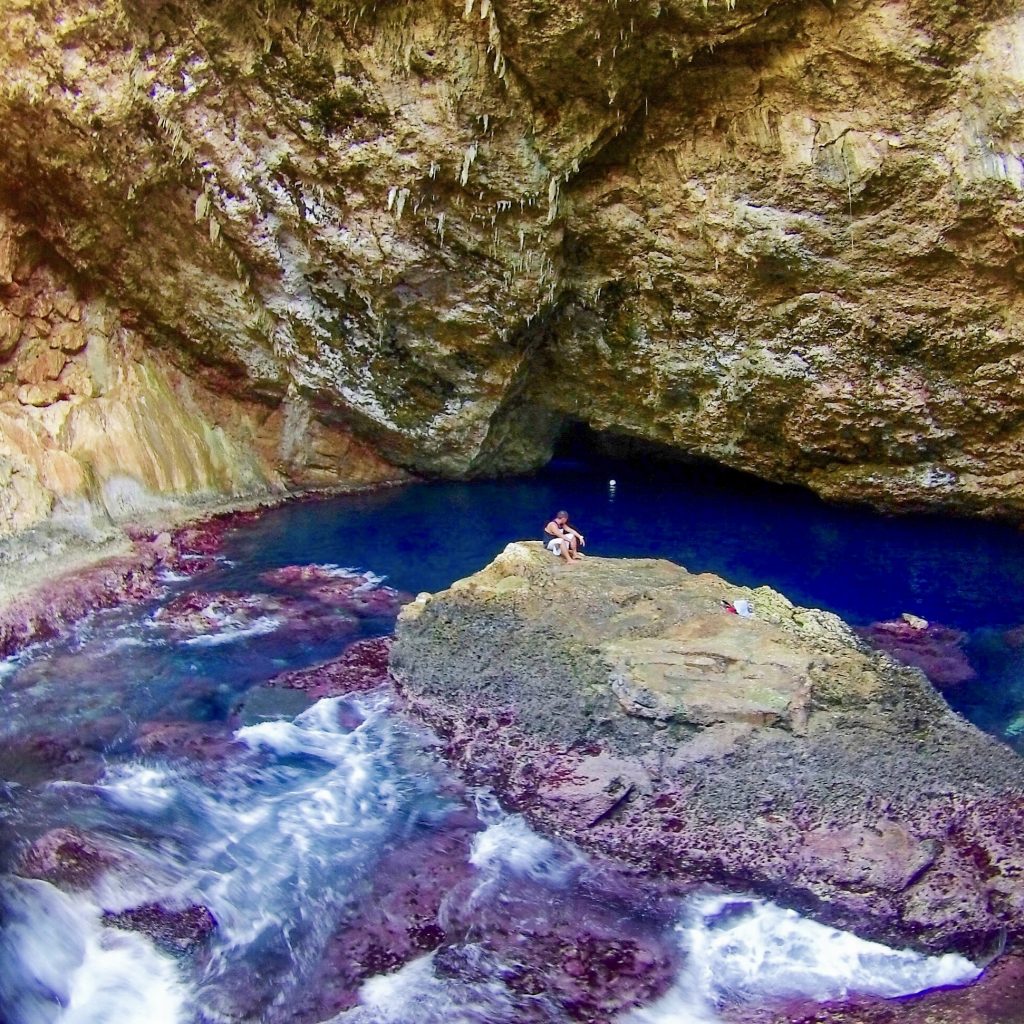
The islands of Rota and Tinian are small and sparsely populated, but travelers can enjoy many more WWII sites, as well as Chamorro ruins and cultural sites. Fishing and diving boats can be chartered for Saipan for a full day of activities on these small outposts.
The thousands of islands of Micronesia offer a diversity of culture, ecology, and topography. The journey to reach this forgotten region of the world is long, but for lovers of nature and history, the experiences to be had in Micronesia are unrivaled.


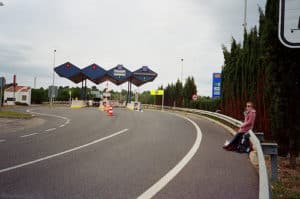

5